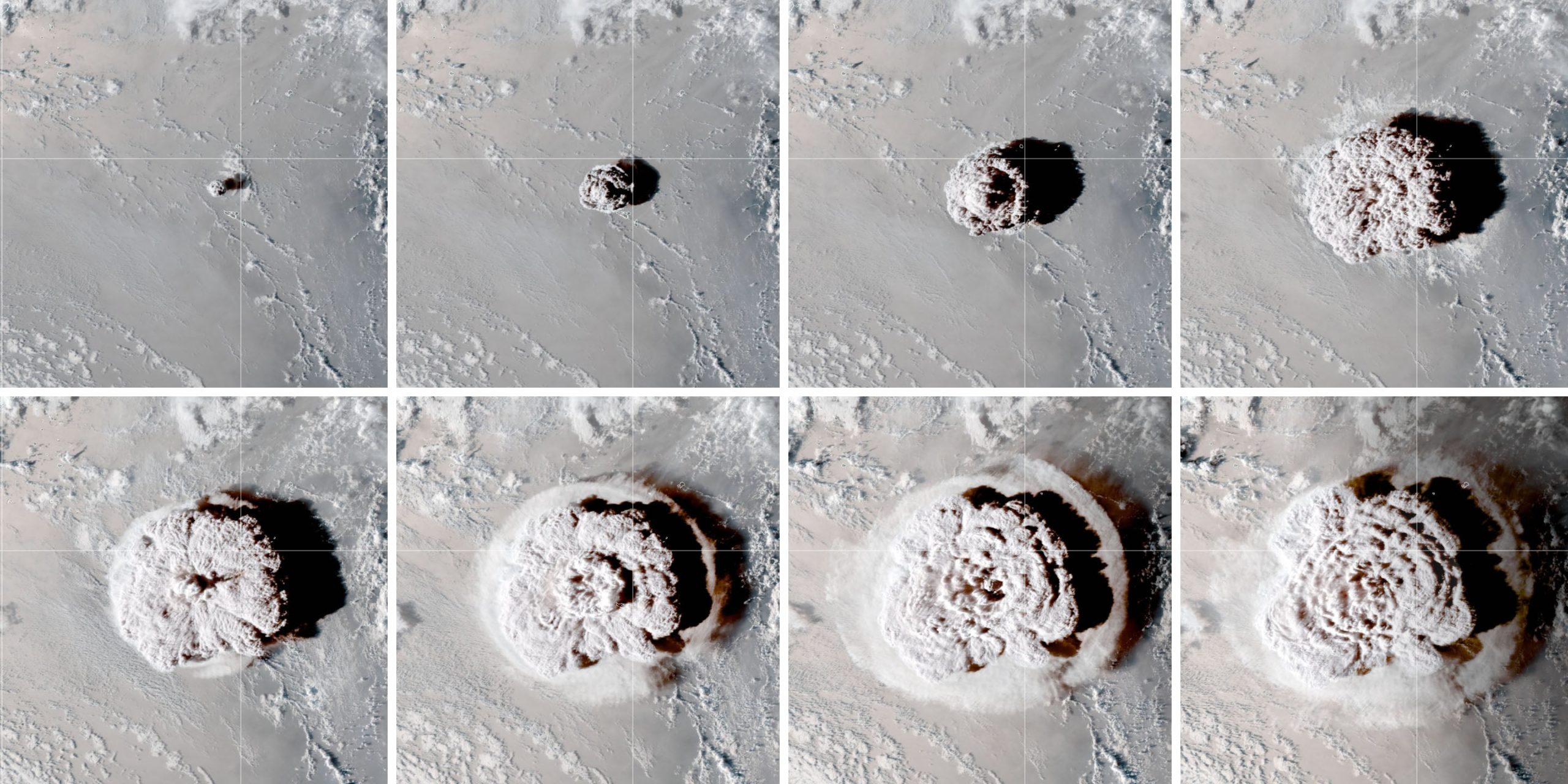Reaching 58 km above Earth, the Tonga plume is now the highest to ever be recorded by satellites.
The gigantic plume produced by the January 15 Hunga Tonga-Hunga Ha‘apai eruption reached a maximum height of 58 km, which is 1.5 times higher than the previous record, set by Mount Pinatubo in 1991, according to NASA’s Earth Observatory. That height resides within the mesosphere, the atmospheric layer sandwiched between the stratosphere and the thermosphere, the latter of which reaches space.
“The intensity of this event far exceeds that of any storm cloud I have ever studied,” said Kristopher Bedka, an atmospheric scientist with NASA, in the Earth Observatory post. “We are fortunate that it was viewed so well by our latest generation of geostationary satellites and we can use this data in innovative ways to document its evolution.”
Two weather satellites made this observation possible: NOAA’s GOES-17 and JAXA’s Himawari-8. Both are equipped with similar imaging capabilities and both are positioned in geostationary orbits above the Earth. The two satellites viewed the eruption from slightly different angles, allowing for a stereoscopic, three-dimensional view of the rising plume. Optical views show the expanding cloud in exquisite detail, with the tallest parts of the plume clearly casting shadows down onto the sections below.

The eruption of the underwater volcano shattered an uninhabited island and released an amount of energy somewhere from 5 to 30 megatons, which is hundreds of times more powerful than the atomic bomb detonated over Hiroshima. The blast generated a shockwave that travelled around the world, launched a destructive tsunami, and covered nearby Tonga in ash.
An animation of the rising plume was made from infrared observations made once every 10 minutes across 13 hours on the day of the eruption. It took 30 minutes for the main plume to reach its maximum height. A secondary pulse rose to 50 km and then broke up into three distinct elements. Lower down in the stratosphere, the ash and gas spread out laterally, covering 157,000 square kilometres.
Two weeks after the eruption, material from the main plume had circled the globe, as evidenced by other satellite observations. Said Konstantin Khlopenkov, a scientist with NASA Langley: “When volcanic material goes this high into the stratosphere, where the winds are not as strong, the volcanic ash, sulphur dioxide, carbon dioxide, and water vapour can be transported all over Earth.”
Aerosols could remain in the upper atmosphere for a year, and possibly longer, but they’re not likely to produce significant atmospheric effects, as NASA atmospheric scientist Ghassan Taha told Earth Observatory. That’s because the plume was low in sulphur dioxide, a molecule known to cause cooling.
That the volcanic eruption won’t affect climate is not a universally held opinion, however. New research from China suggests the blast released significant amounts of carbon dioxide into the atmosphere.
It’s not a huge surprise that experts are in disagreement about the eruption’s effects, as we’ve never seen anything quite like it in the modern era. Scientists will, no doubt, be studying this eruption for some time to come.
